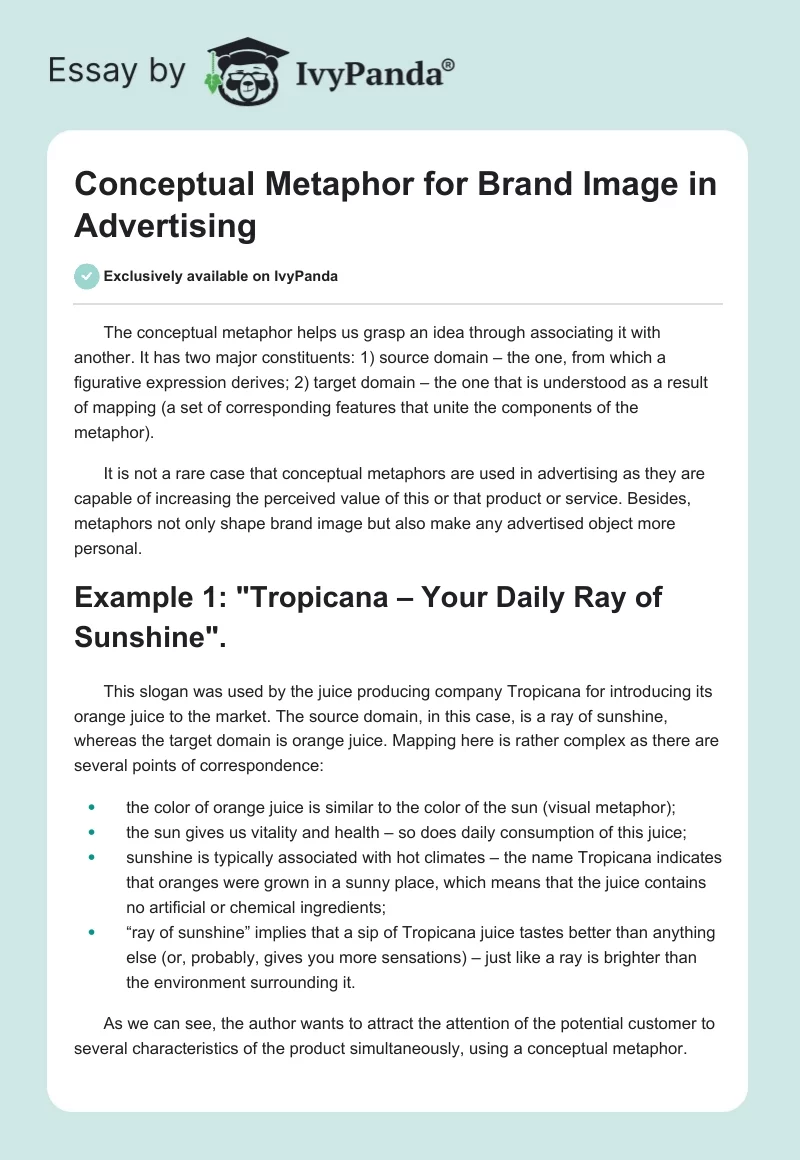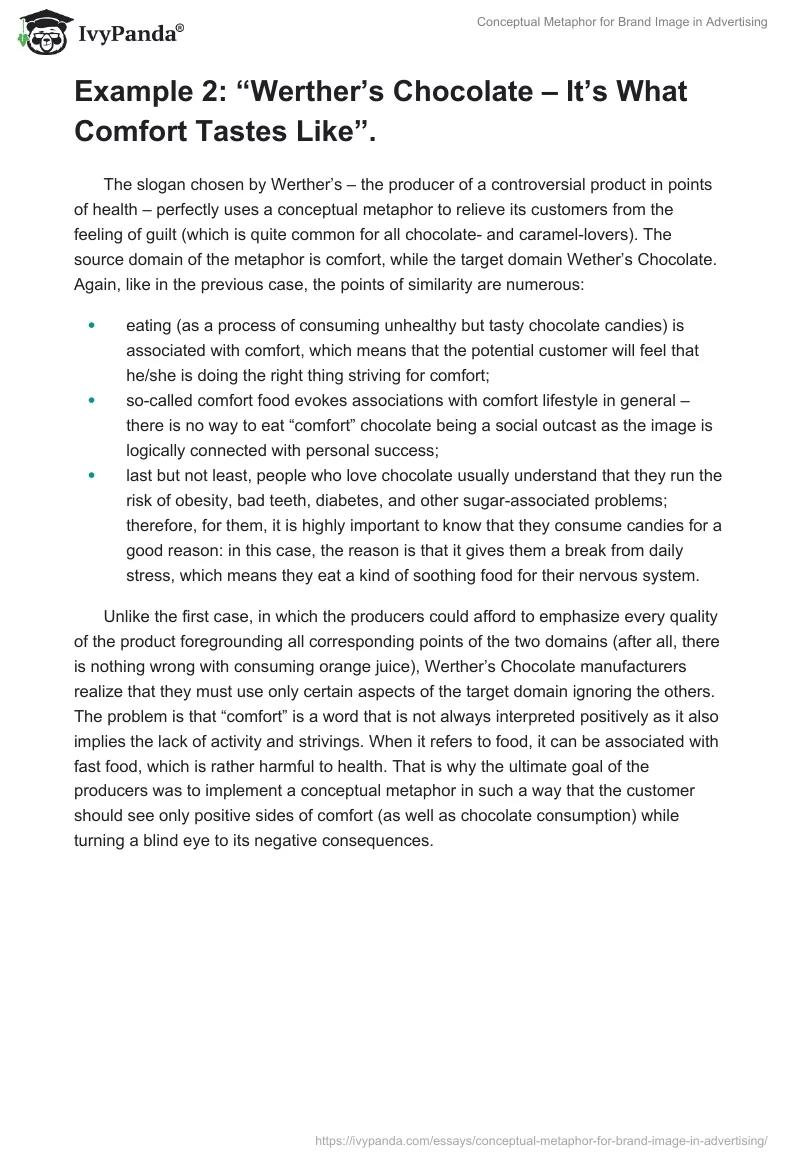The conceptual metaphor helps us grasp an idea through associating it with another. It has two major constituents: 1) source domain – the one, from which a figurative expression derives; 2) target domain – the one that is understood as a result of mapping (a set of corresponding features that unite the components of the metaphor).
It is not a rare case that conceptual metaphors are used in advertising as they are capable of increasing the perceived value of this or that product or service. Besides, metaphors not only shape brand image but also make any advertised object more personal.
Example 1: “Tropicana – Your Daily Ray of Sunshine”.
This slogan was used by the juice producing company Tropicana for introducing its orange juice to the market. The source domain, in this case, is a ray of sunshine, whereas the target domain is orange juice. Mapping here is rather complex as there are several points of correspondence:
- the color of orange juice is similar to the color of the sun (visual metaphor);
- the sun gives us vitality and health – so does daily consumption of this juice;
- sunshine is typically associated with hot climates – the name Tropicana indicates that oranges were grown in a sunny place, which means that the juice contains no artificial or chemical ingredients;
- “ray of sunshine” implies that a sip of Tropicana juice tastes better than anything else (or, probably, gives you more sensations) – just like a ray is brighter than the environment surrounding it.
As we can see, the author wants to attract the attention of the potential customer to several characteristics of the product simultaneously, using a conceptual metaphor.
Example 2: “Werther’s Chocolate – It’s What Comfort Tastes Like”.
The slogan chosen by Werther’s – the producer of a controversial product in points of health – perfectly uses a conceptual metaphor to relieve its customers from the feeling of guilt (which is quite common for all chocolate- and caramel-lovers). The source domain of the metaphor is comfort, while the target domain Wether’s Chocolate. Again, like in the previous case, the points of similarity are numerous:
- eating (as a process of consuming unhealthy but tasty chocolate candies) is associated with comfort, which means that the potential customer will feel that he/she is doing the right thing striving for comfort;
- so-called comfort food evokes associations with comfort lifestyle in general – there is no way to eat “comfort” chocolate being a social outcast as the image is logically connected with personal success;
- last but not least, people who love chocolate usually understand that they run the risk of obesity, bad teeth, diabetes, and other sugar-associated problems; therefore, for them, it is highly important to know that they consume candies for a good reason: in this case, the reason is that it gives them a break from daily stress, which means they eat a kind of soothing food for their nervous system.
Unlike the first case, in which the producers could afford to emphasize every quality of the product foregrounding all corresponding points of the two domains (after all, there is nothing wrong with consuming orange juice), Werther’s Chocolate manufacturers realize that they must use only certain aspects of the target domain ignoring the others. The problem is that “comfort” is a word that is not always interpreted positively as it also implies the lack of activity and strivings. When it refers to food, it can be associated with fast food, which is rather harmful to health. That is why the ultimate goal of the producers was to implement a conceptual metaphor in such a way that the customer should see only positive sides of comfort (as well as chocolate consumption) while turning a blind eye to its negative consequences.


